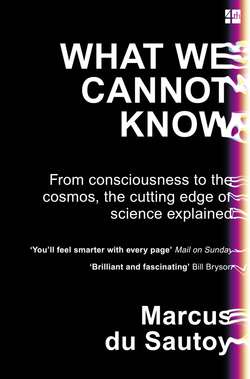Читать книгу What We Cannot Know: Explorations at the Edge of Knowledge - Marcus Sautoy du - Страница 27
THE REVENGE OF THE GRASSHOPPER
ОглавлениеWhen Lorenz explained his findings to a colleague, he received the reply: ‘Edward, if your theory is correct, one flap of a seagull’s wings could alter the course of history forever.’
The seagull would eventually be replaced by the now famous butterfly when Lorenz presented his findings in 1972 at the American Association for the Advancement of Science in a paper entitled: ‘Does the Flap of a Butterfly’s Wings in Brazil Set Off a Tornado in Texas?’
Curiously, both the seagull and the butterfly might have been pre-empted by the grasshopper. It seems that already in 1898 Professor W. S. Franklin had realized the devastating effect that the insect community could have on the weather. Writing in a book review, he believed:
An infinitesimal cause may produce a finite effect. Long-range detailed weather prediction is therefore impossible, and the only detailed prediction which is possible is the inference of the ultimate trend and character of a storm from observations of its early stages; and the accuracy of this prediction is subject to the condition that the flight of a grasshopper in Montana may turn a storm aside from Philadelphia to New York!
This is an extraordinary position to be in. The equations that science has discovered give me a completely deterministic description of the evolution of many dynamical systems like the weather. And yet in many cases I am denied access to the predictions that they might make because any measurement of the location or wind speed of a particle is inevitably going to be an approximation to the true conditions.
This is why the MET office, when it is making weather predictions, takes the data recorded by the weather stations dotted across the country and then, instead of running the equations on this data, the meteorologists do several thousand runs, varying the data over a range of values. The predictions stay close for a while, but by about five days into the future the results have often diverged so wildly that one set of data predicts a heat wave to hit the UK while a few changes in the decimal places of the data result in rain drenching the country.
Starting from nearly the same conditions, forecast A predicts strong wind and rain over the British Isles in 4 days’ time, while forecast B predicts incoming high pressure from the Atlantic.
The great Scottish scientist James Clerk Maxwell articulated the important difference between a system being deterministic yet unknowable in his book Matter and Motion, published in 1877: ‘There is a maxim which is often quoted, that “The same causes will always produce the same effects.”’ This is certainly true of a mathematical equation describing a dynamical system. Feed the same numbers into the equation and you won’t get any surprises. But Maxwell continues: ‘There is another maxim which must not be confounded with this, which asserts that “Like causes produce like effects.” This is only true when small variations in the initial circumstances produce only small variations in the final state of the system.’ It is this maxim that the discovery of chaos theory in the twentieth century revealed as false.
This sensitivity to small changes in initial conditions has the potential to sabotage my attempts to use the equations I’ve written down to predict the outcome of my dice. I’ve got the equations, but can I really be sure that I’ve accurately recorded the angle at which the cube leaves my hand, the speed at which it is spinning, the distance to the table?
Of course, everything isn’t completely hopeless. There are times when small changes don’t alter the course of the equations dramatically, like the paths in the classical billiard table. What is important is to know when you cannot know. A beautiful example of knowing the point when you can’t know what is going to happen next was discovered by mathematician Robert May when he analysed the equations for population growth.
